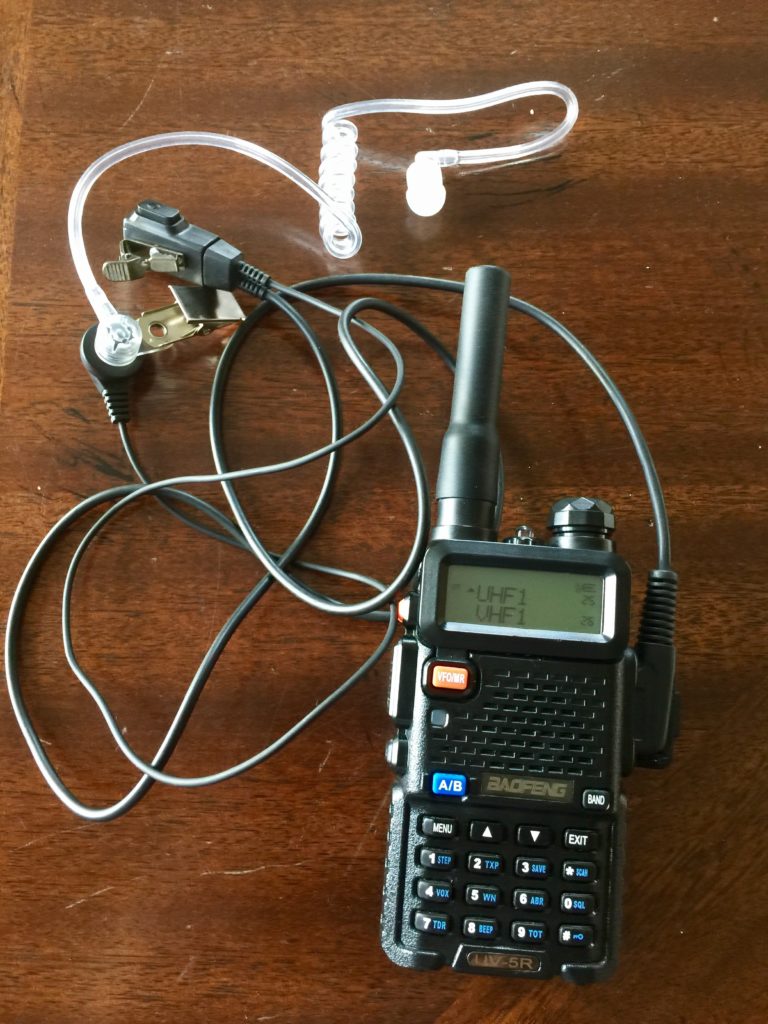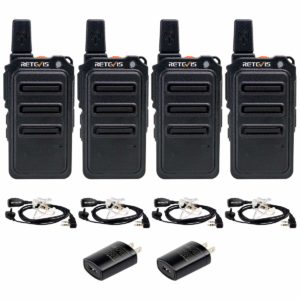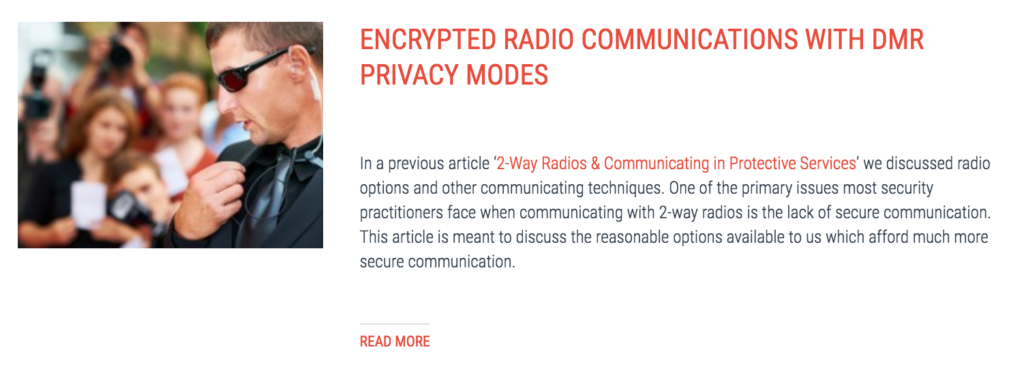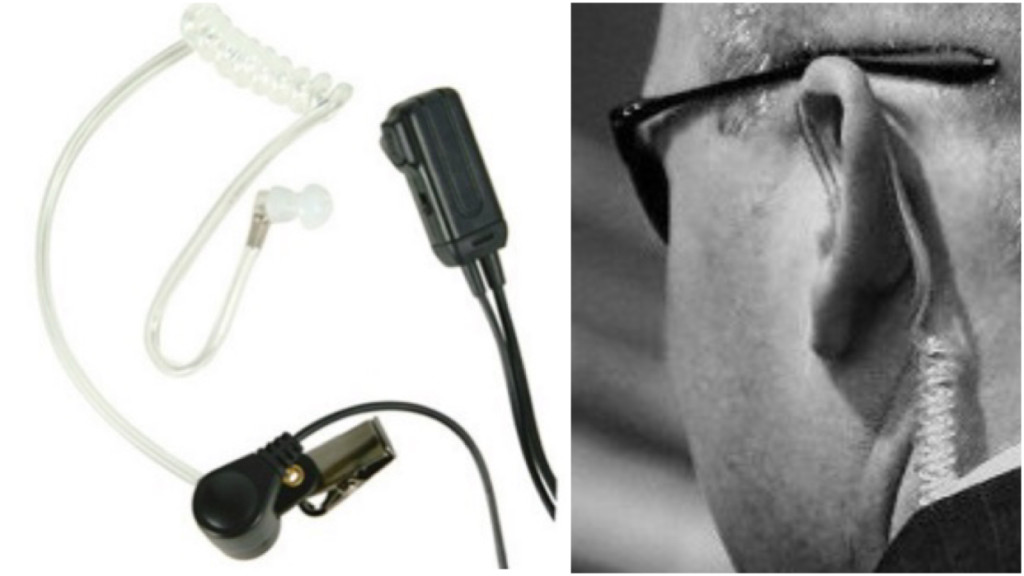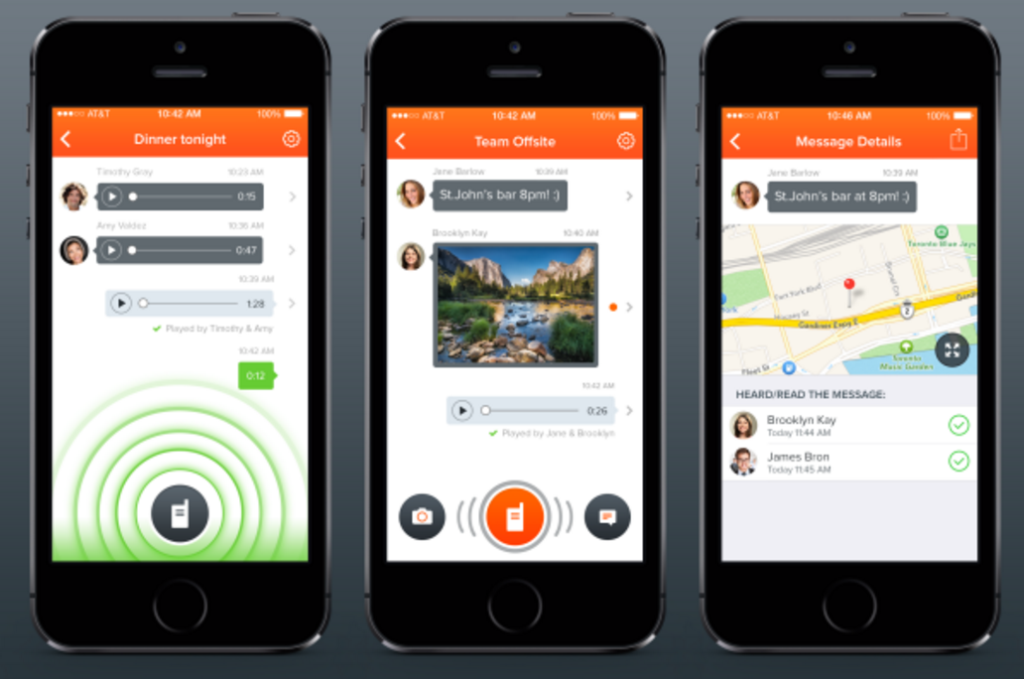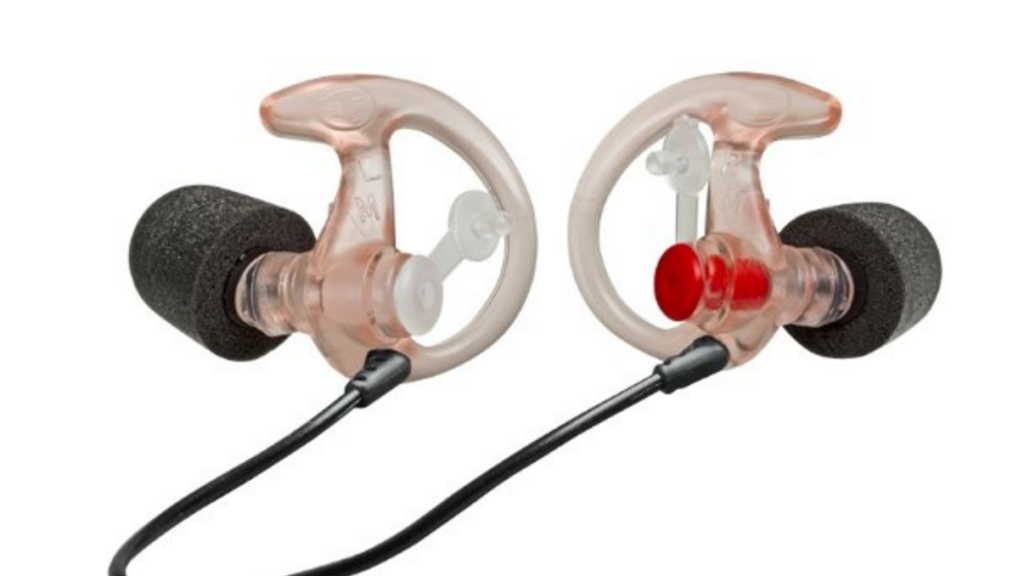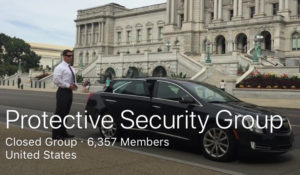2-Way Radios & Communicating in Protective Services
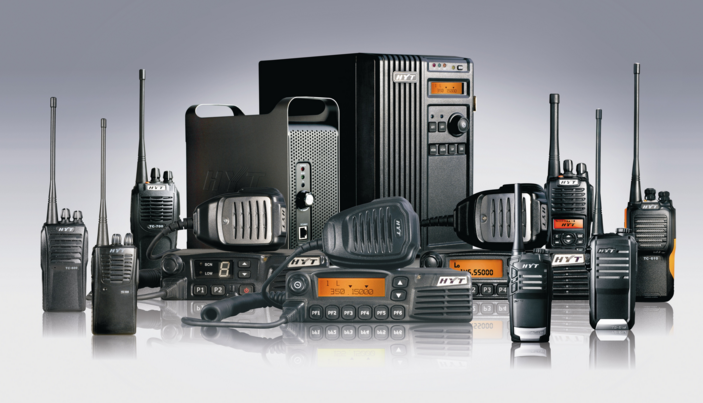
Communicating is an essential part of working in any team, especially so in protective services where disseminating critical information immediately can mean the difference of a successful evacuation or a critical loss event. Online and in person, I routinely observe questions about radios and other gear, as most people know me as a recovering 12-stepper when it comes to gear. I have the personality ‘flaw’ that requires me to know how everything works and I am not satisfied or even comfortable in using something until I do. I was the kid who took everything apart, unfortunately having to put some of them back on the Christmas list next year…those of you like me know what I mean.
In this article, I’d like to discuss some options for communicating, particularly focusing on what I have found to be effective and suitable for most budgets and the widest range of scenarios.
Two-Way Communicators
First, some options – there are many manufacturers out there and they all have their pros and cons. For most applications, we will be talking about the 14 UHF FRS channels and the 5 VHF MURS channels. These are channels do not require an individual license, but are regulated by the FCC. If you operate in the same area frequently and depend largely on radio communication, I would suggest a business license, potentially with a repeater service, and you may also seek encryption. However, for the majority of us who only use it to augment other communication, FRS/MURS channels are more than suitable in most cases as long as you keep sensitive information off the radio and used coded communication. *FCC certification of the device used for transmitting is required when operating on FRS/MURS channels.
–
–
Two brands of radios that I find to be a remarkable value are Baofeng (pictured above) and Retevis. While most modelasare not FCC certified, Baofeng makes many different models to suit many different needs, and they have US based servicing which is a bonus. The ‘basic’ model is the BF-888 which is a standard walkie-talkie type of radio – you have a knob to turn it on which is the volume knob, a channel knob with pre-set channels and a push-to-talk (PTT) button. The added benefit of the 888s are the function of being programmable.
The Baofeng UV-5R series which is a workhorse of a radio that is also programmable and very easily accessorized with a multitude of options, such as the flexible stubby antenna shown above. They can also be programmed as a base or repeater, which can significantly increase your operating range, see this article and also this video for a ruggedness review. The UV-5R series is also a dual band radio, so you can talk with any VHF and UHF counterparts, and even monitor both bands simultaneously or two channels on one band. The other benefits of programmable radios are the option to set up your radios to talk to anyone you work with and you can customize your channels and CTCSS (Continuous Tone-Coded Squelch System) privacy and repeater codes. The Kenwood two pin type headset connection works, and the Retevis set works great. The other is the BF-F9 series which has a particular perk of being ‘tri-power’ meaning you may select up to 8 watts output – more on that later. In the video below, you can watch a Baofeng UV-5R Extreme Radio Test. For more information on programming radios and CTCSS codes, see this link: Custom Radio Programming: Frequencies and CTCSS
–
–
Above is a great package deal on Amazon for Retevis RT19 radios. These are excellent, UHF, programmable radios that very flat and have a small profile. For around $50 you can get a 4 radio package that comes with 4 covert earpieces as well. These radios also charge via micro-USB, so they are very easy to travel with.
–
A couple of quality yet reasonably priced programmable UHF digital mobile radio (DMR) options are the front-panel programmable, water-proof TYT MD-390 and the 10-watt TYT MD-680. These radios offer GPS function, MotoTRBO (Motorola) compatibility, IP67 water resistance, encryption (basic and enhanced 40 bit privacy modes) and even have a text message capability. I purchased an MD-390 on ebay with cable and software for $120, and a few MD-680s for $75 each.
Read more on Encrypted Radio Communications with DMR Privacy Modes
–
–
Another very popular brand is Midland and pretty much any other type of ‘bubble-pack’ walkie-talkies (the plastic bubble package that you get at stores like Radio-Shack and Wal-Mart, etc.) These are perhaps the most prolific as they are very inexpensive, relatively effective and very easy to use. The models that I am most familiar with in working with others on details are the Midland LXT500 and GXT1000 series – both of these are light weight, effective and cheap. The GXT series is also water resistant. Midland also has the classic pigtail ear-piece, the AVPH3.
–
–
Motorola‘s line pretty much benchmarks two-way communicators. One of my favorite radios is the SL-300 series and the SL7000 series are the top-or-the-line where you will get outstanding functionality for an ‘outstanding’ price.
–
Executive Protection Training – Security Driver Training
–
Other radios worthy of mention as I have seen them used frequently, mostly due to cost and size is the Cobra CXT series, these little buggers are just about as small as you can get but obviously come with limitations – such as transmit (TX) power, battery life, accessories, etc.
–
COMMS 101 – 2M VHF
–
Line of Sight: Capabilities and Limitations in an Urban Environment, Working With Vehicles
One of the biggest drawbacks of using two-way communicators is the line-of-sight limitation and the subsequent limitation in range this affords the user when separated by relatively small distances in an urban environment. If we were to consider the use of separate vehicles and trying to communicate with an advance agent who may be 30 miles apart the issue becomes a non-starter as these radios simply will not cut it – that is to say unless you utilize a repeater, see link above or video below.
–
Set up a Baofeng UV-5R Repeater System
The radio horizon is like the visual horizon: It is the distance to a point where the signals are effectively blocked by the curvature of the earth. For example, suppose you are just under six feet tall, and your HT radio antenna extends up to precisely six feet when you raise the HT to your mouth to transmit. When you transmit on our theoretical bald earth you get: D = √H x 1.415
Let H be the height of your antenna in feet above the ground on the smooth earth, and let D be the distance to the radio horizon in miles. The radio horizon is calculated as:
–
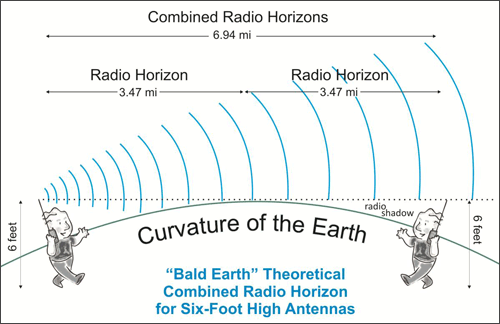
Image Cred: www.HamRadioSchool.com
–
Other than that, we may elect to augment our two-way communicators with features and apps on our smartphone, such as Voxer or Zello, which I have had great success with implementing into comm plans. Voxer is an instant communication tool over GSM (global system for mobile communications) so it is not limited by LOS. (think Nextel) There are many options depending on your platform. If integrating with handheld radios, you can get a 3.5mm adapter for them to enable seamless plug and play between your mobile and radio. I have found the iASUS 500k to work best with Voxer and the bluetooth Nighthawk Lapel Microphone NT5000 to work great with Zello.
–
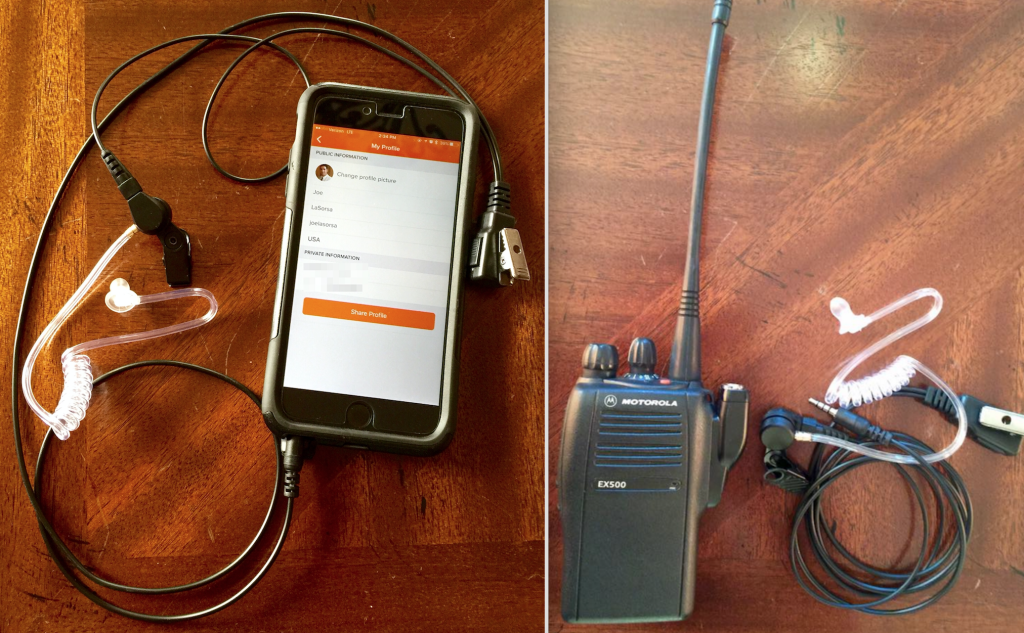
–
Also, Voxer allows you to geotag your communications as to share your location automatically, add groups of recipients to communicate to an entire group at once, records all messages, and also allows for text and MMS. (multimedia message system […pictures]) With Zello, you can use the app for free, and Voxer comes in at $30/year for the full functionality subscription. I highly recommend you give a shot to augment to your comm plan, but still have direct two-way radios, such as the Retevis RT19, handy. (Motorola EX500 shown above)
–
–
As for working in and around vehicles, I refer back to Baofeng and the UV-82HP ‘tri-power’ model. This model allows you to select 7-watt output, (*which is not authorized as per the FCC to communicate on FRS channels) …so hypothetically you could get a big advantage over the standard 3-watt bubble-packs by transmitting at 7 watts. Additionally, for use in vehicles, Baofeng has you covered again with their Battery Eliminator/DC Adapter which allows for indefinite use in a vehicle by means of replacing the battery pack with an adapter that plugs into a DC outlet. They also have extended battery packs if on foot and longer range antennas for the vehicle as well, FYI.
–
Pro Tip for working in nightclubs, concerts, etc.
Use Surefire Sonic EP-7 ear protection: simply remove the canal plug and insert the acoustic terminal.–
–
Encrypted Communicators
Several companies out there make encrypted options for radio communications. Some of the options are Motorola, Nabishi Systems, and MultiVoice. Multi voice is a system I have yet to use on detail, but I have used it at a demo, and it is very interesting as you cannot squash each other as you talk, much like a telephone conference call and they even have systems that connect your PTT over your mobile carrier, enabling instant, encrypted PTT intercom across North America – Link. These systems are expensive and the issue is you cannot communicate with support entities, if required. In my opinion, keep sensitive info off of your comm system, and only use encryption if you absolutely have to.
–
Which will work best for you? You will have to select the best option depending on your task, environment, desired communication network, preferred platform and of course budget. As always, this was simply my opinion, which may or may not be worth any more than what you paid for it.
Thanks for reading. Stay gray. – JML
–
———————————————————
Joseph M. LaSorsa, CPP® is currently employed as a senior partner managing and conducting: Protective Operations Training Courses, Executive Protection & Bodyguard Services, Risk Management Consultations & Seminars, Workplace Violence Prevention Seminars & Intervention Services, Security Consultations & Seminars, Private Investigations and Technical Surveillance Counter-Measures with LaSorsa & Associates – an International Protection, Investigations & Consulting Firm.
https://www.linkedin.com/in/josephmlasorsa
–

